Play Lab

The Arts + Industries Building (AIB) has always been the Smithsonian’s incubator for imagining a future with bold and radical ideas. As the first National Museum of the United States, AIB’s legacy as a democratic center of knowledge is baked into its very DNA. FUTURES wanted to celebrate this legacy by creating an “incubator in an incubator”, the FUTURES Play Lab. In monthly residencies, artists, creative makers, and partners join FUTURES to share their visions of a playful, hopeful future.
December 2021-January 2022, April 2022, June-July 2022 | Oracle
Four distinct VR experiences were created for the exhibition, helping visitors see and experience how collective action can lead us to a more sustainable future. With the “Future of Energy”, visitors could choose between two different energy-based journeys in a virtual world custom built to incorporate elements from the area surrounding AIB. Visitors could choose to follow a time travel experience about the history and forecasted future of energy infrastructure, going from gravel roads and the first light bulb to a future cityscape with clean energy solutions. Alternatively, visitors could journey into a home to uncover hidden sustainability actions to help reduce their energy consumption.
Premiering with the April residency in coordination with Earth Day, “The Future of Water” VR journey chapter was created. Like energy, these two chapters aimed to demonstrate to visitors how water consumption impacts our shared future. One journey allowed visitors to follow the water cycle from street level, through the storm drain system and take actions to remedy impediments and issues that arise as water moves through our infrastructure. Visitors could hack through fatbergs in the drain systems, clear litter, and save a sea turtle from plastic pollution. They were able to see “invisible pollutants” like microplastics, chemicals, and medicine pollutants in the water system. Alternatively, visitors could follow a water scarcity journey through a home in Nevada, where like the home scene in the Future of Energy, they can uncover hidden sustainability actions to conserve water. For June, a projection installation of scenes from the VR experience and an additional AR version of each chapter was shared with visitors to close out the experience at the end of FUTURES.

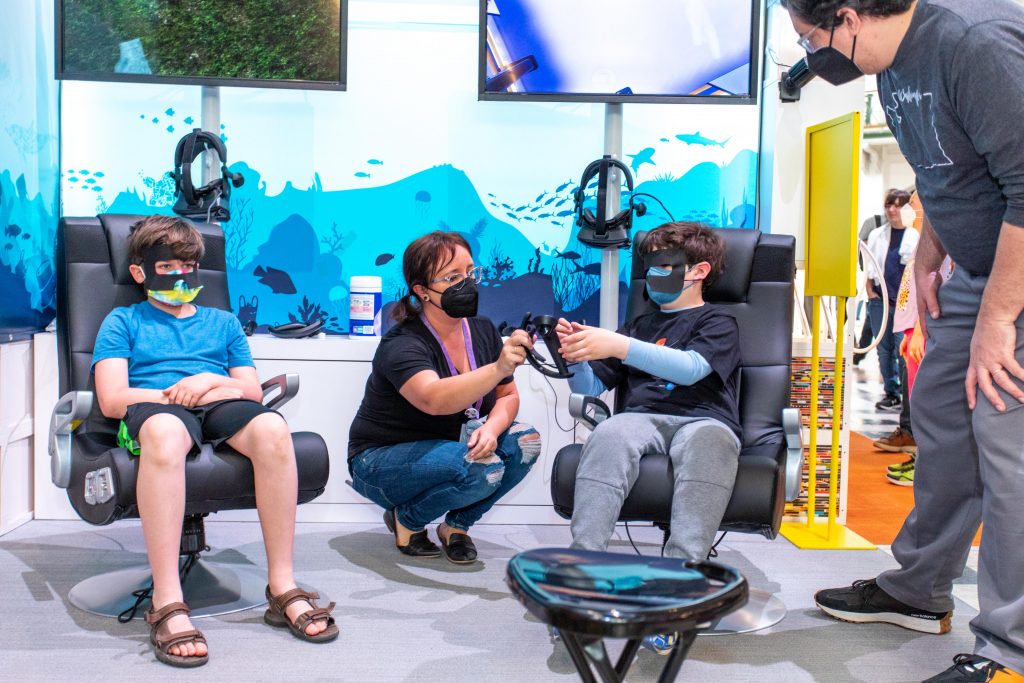
January | Janelle Shane
Play Lab also leaned into more analog technologies to delight, inspire, conjure curiosity and usher in bold ideas about the future. Shortly after the new year, Janelle Shane created hundreds of AI-generated resolutions visitors were invited to take home and share in their communities.
Janelle Shane’s AI humor blog, AIweirdness.com, looks at the strange side of artificial intelligence. She has been featured on the main TED stage, in the New York Times, The Atlantic, WIRED, Popular Science, All Things Considered, Science Friday, and Marketplace. Her book, “You Look Like a Thing and I Love You: How AI Works, and Why It’s Making the World a Weirder Place” uses cartoons and humorous pop-culture experiments to look inside the minds of the algorithms that run our world, making artificial intelligence and machine learning both accessible and entertaining.

2/15 – 3/1 | Carlos Carmonamedina
Carmonamedina shares five new illustrations of the Smithsonian Arts + Industries Building (AIB) created through his Futurist-in-Residence project, transporting visitors on a journey from past visions of the future, through AIB today, and beyond.
Every week, Carlos Carmonamedina highlights the human side of Washington, DC. DC is my City began in 2016 as a personal challenge to produce one postcard a week. Having recently moved to DC from Toulouse, France, Carlos used this project as an excuse to become familiar with the city. Posting his work online – Reddit, most notably – to keep himself accountable, it soon gained the support of the local community. In his images, the capital becomes a multifaceted character in and of itself, an homage to an exciting and awesome metropolis changing at an ever-accelerating pace. Carmonamedina completed his art education in Xalapa (Mexico) and in Cluj-Napoca (Romania), where he majored in Visual Arts and Painting.
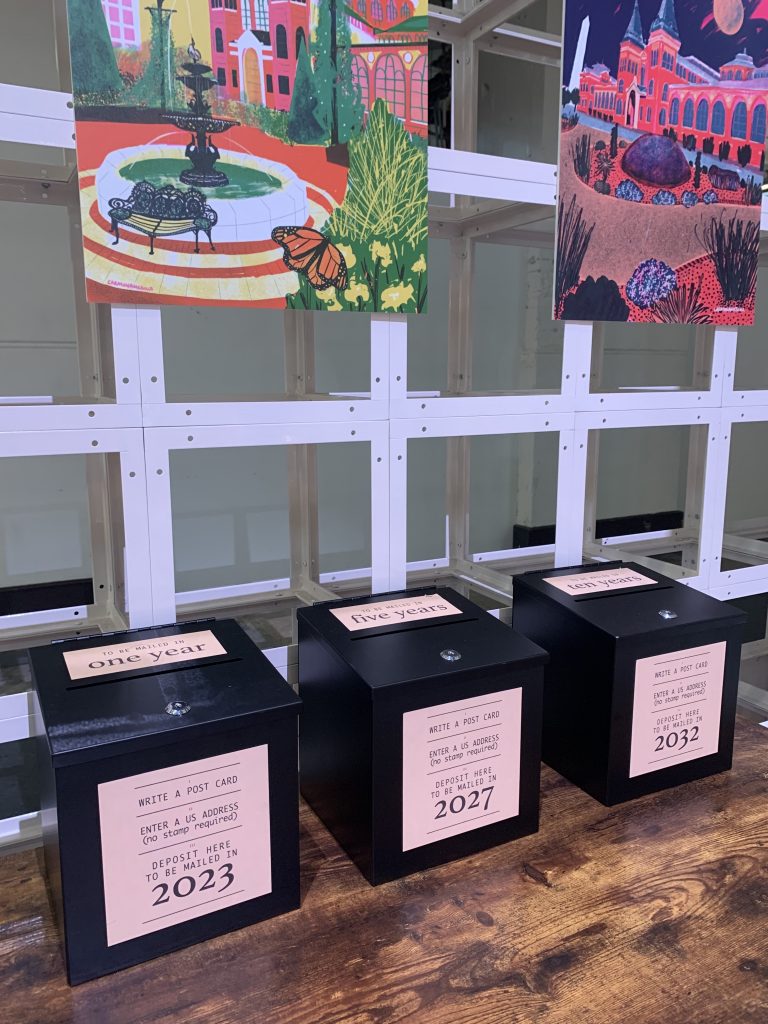
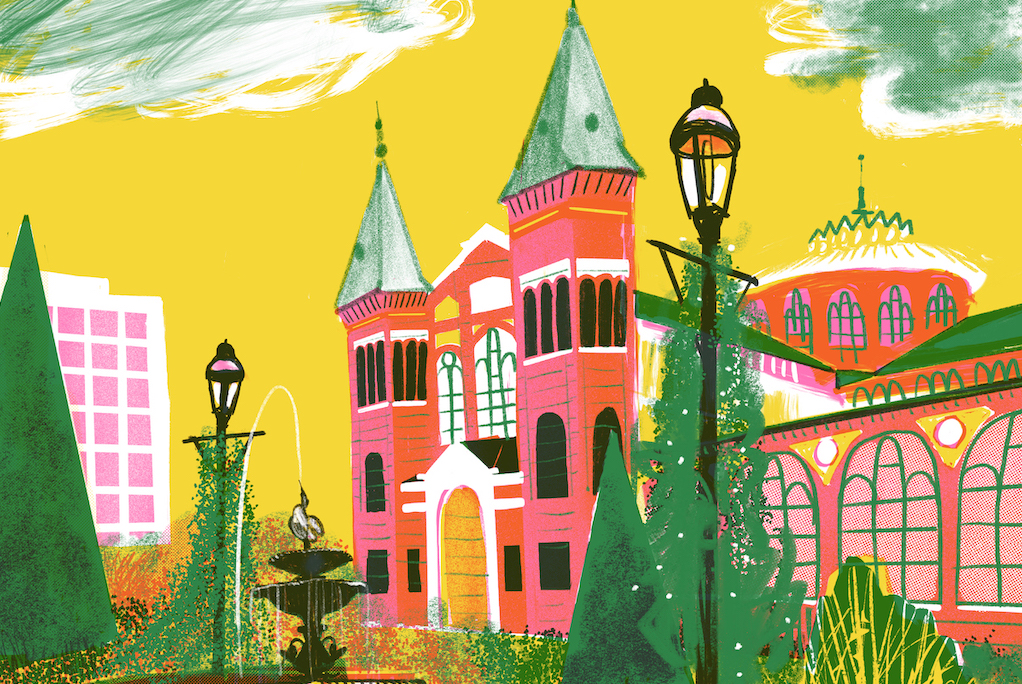
3/3 – 3/31 | Cyborg Arts Foundation
Do you want to detect sonar like a dolphin, or feel the movement of the Earth beneath your feet like an elephant? What if you could hear colors? All of these are questions cyborg artists and Futurist-In-Residence Moon Ribas and Neil Harbisson have posed through their art. As co-founders of the Cyborg Arts Foundation, they lead a growing community of cyborg artists who have created technologies to embed into their bodies, bringing their human-senses closer to others that occur in nature. Throughout March in the FUTURES Play Lab, explore what it’s like to live as a cyborg with self-portraits by the Foundation’s cyborg artists themselves, and interact with sculptures that offer a cyborg sensory experience. To culminate the residency, everyone is invited to a rollicking late-night Cyborg Birthday Party Friday, March 25 exploring perception and senses, celebrating Neil’s 18th year as a cyborg.
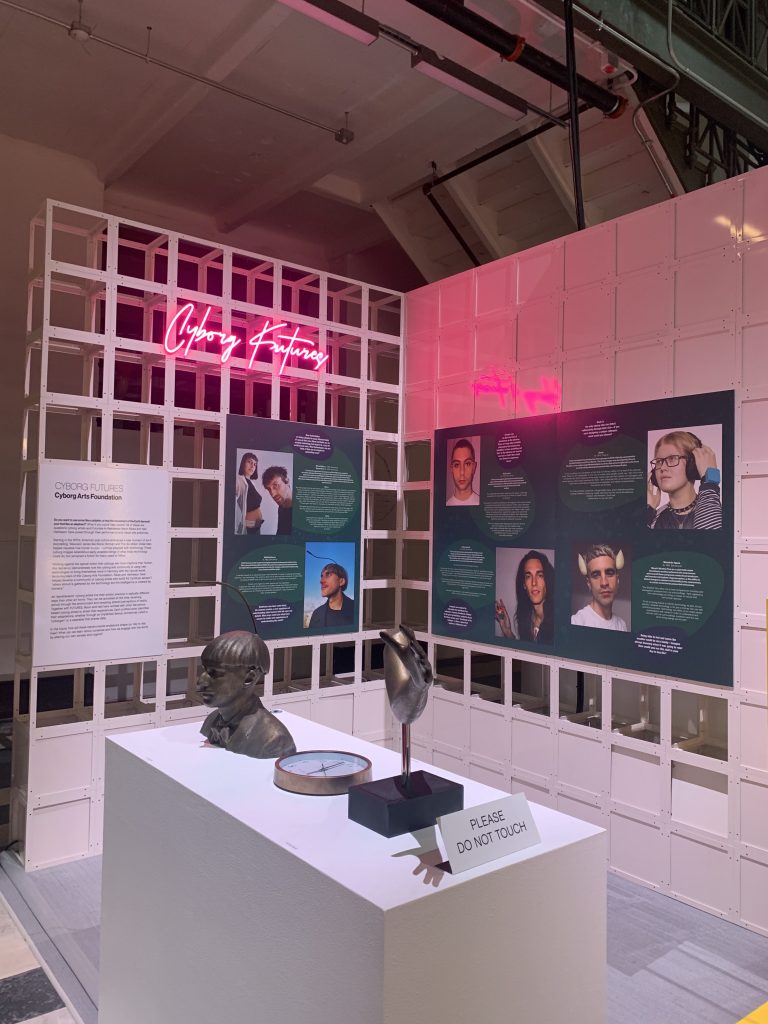

5/4 – 6/5 | Meta “Moonwalk”
Meta and FUTURES collaborated to create Moonwalk, the first fully immersive VR experience using the NASA lunar photographs from the six Apollo missions. Using photogrammetry and AI, makers at Black Dot VR stitched together upwards of 7000 photographs shot on the lunar surface to create a six minute time-travel journey across all the Apollo Missions from 1969-1972. Visitors were welcomed into the experience by Dr. Mae Jemison, former astronaut and medical doctor, from inside the Command Module, hovering in orbit over the lunar surface. Once visitors “landed”, they journeyed through sight and sound across the Moon, hearing the archival audio files of the astronauts and central command while on mission. 3D assets from the Smithsonian’s Digitization Programs Office made this experience possible, and helped link the Smithsonian’s collection and AIB’s unique history to this experience. By using three distinct AR filters, visitors could revisit the first exhibition of the lunar artifacts as they would have been seen in AIB in the early 1970’s. They could also explore the more intricate details of the Command Module, or take a selfie on the moon in a spacesuit modeled from the one worn in the Apollo 11 mission. A bespoke short film was created to detail how these AR and VR assets can be used in forthcoming Meta Immersive Learning platforms.
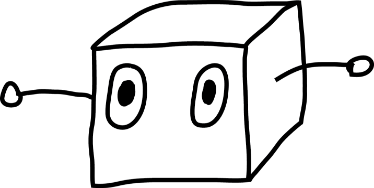
Get another AI-generated
New Year’s resolution
READ MORE
Washington Post: Maybe 2022 should be the year we turn over decision-making to the AI read moreMeet the Futurist
 Janelle Shane’s AI humor blog, AIweirdness.com, looks at the strange side of artificial intelligence. She has been featured on the main TED stage, in the New York Times, The Atlantic, WIRED, Popular Science, All Things Considered, Science Friday, and Marketplace. Her book, “You Look Like a Thing and I Love You: How AI Works, and Why It’s Making the World a Weirder Place” uses cartoons and humorous pop-culture experiments to look inside the minds of the algorithms that run our world, making artificial intelligence and machine learning both accessible and entertaining.
Janelle Shane’s AI humor blog, AIweirdness.com, looks at the strange side of artificial intelligence. She has been featured on the main TED stage, in the New York Times, The Atlantic, WIRED, Popular Science, All Things Considered, Science Friday, and Marketplace. Her book, “You Look Like a Thing and I Love You: How AI Works, and Why It’s Making the World a Weirder Place” uses cartoons and humorous pop-culture experiments to look inside the minds of the algorithms that run our world, making artificial intelligence and machine learning both accessible and entertaining.